Leg exercises are an essential component of any well-rounded fitness routine.
The lower body muscles are some of the largest and strongest in the body, and working them can have a wide range of benefits.
However, not all leg exercises are created equal, and it’s important to understand the anatomy of the legs and how different exercises target different muscles.
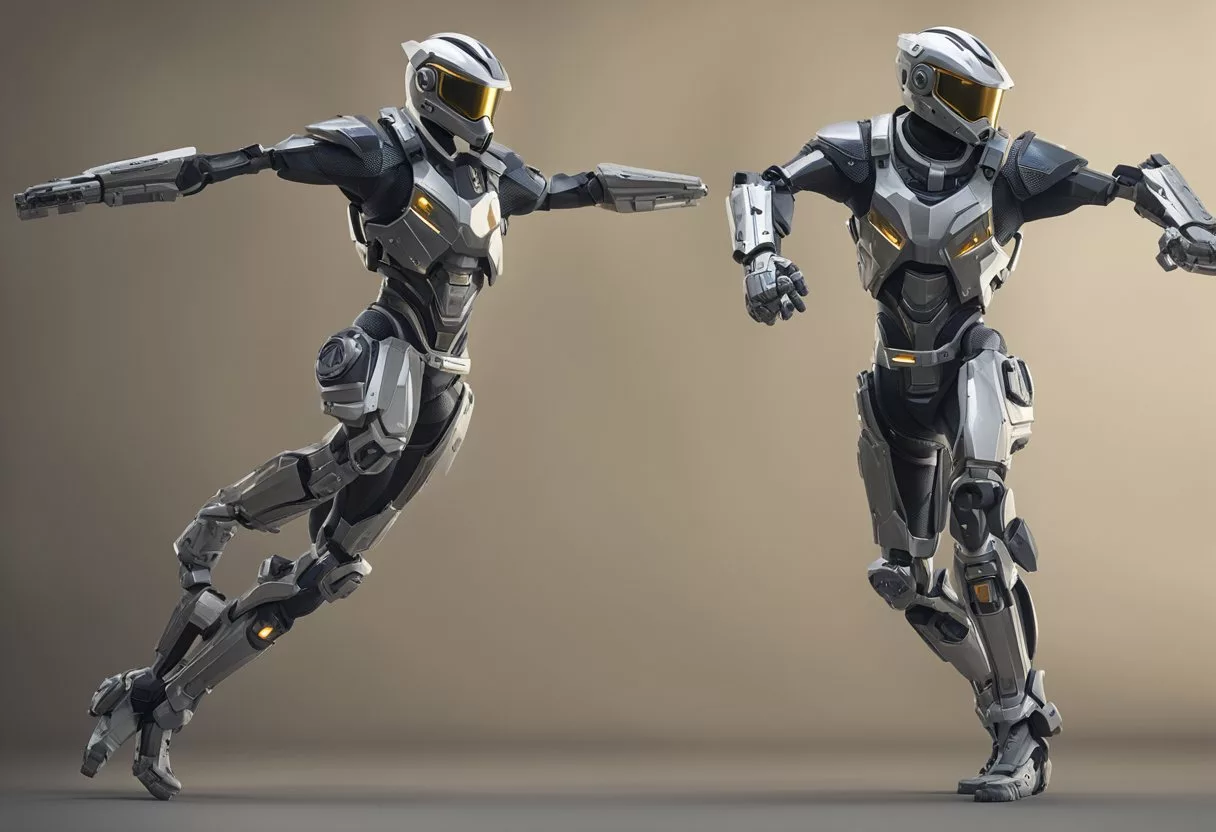
Understanding leg anatomy is key to designing an effective leg workout.
The legs are made up of several major muscle groups, including the quadriceps, hamstrings, glutes, and calves.
Each of these muscle groups plays a different role in movement and stability, and targeting them with specific exercises can help to improve strength, power, and endurance.
Additionally, incorporating both compound and isolation exercises into a leg workout can help to ensure balanced muscle development and prevent injury.
Key Takeaways
- Leg exercises are important for building strength, improving athletic performance, and burning fat.
- Understanding leg anatomy can help to target specific muscle groups and prevent injury.
- Incorporating a variety of exercises and equipment can help to create a well-rounded leg workout.
Understanding Leg Anatomy
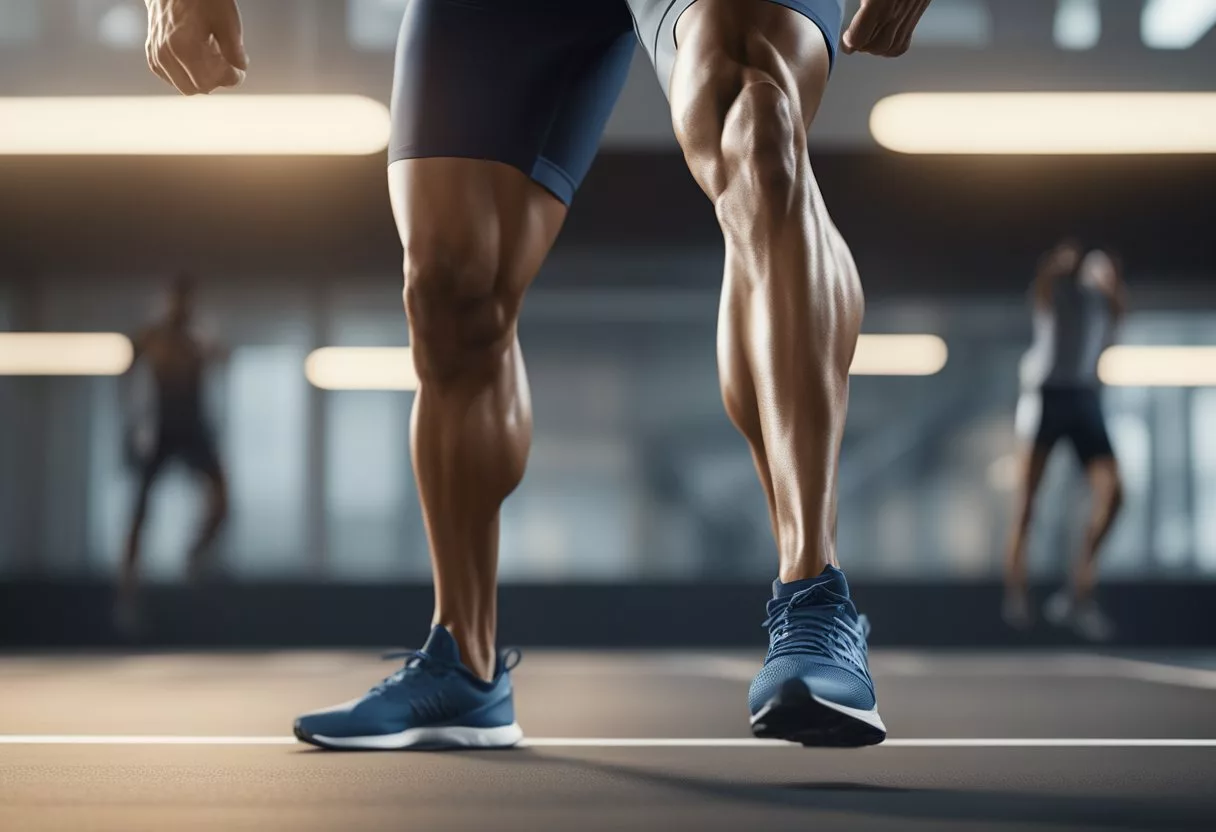
Muscle Groups
The human leg is composed of several muscle groups that work together to provide stability, strength, and mobility.
The main muscle groups of the leg include the glutes, quads, hamstrings, calves, adductors, abductors, hip flexors, gastrocnemius, soleus, and rectus femoris.
The glutes, or gluteal muscles, are located in the buttocks and are responsible for hip extension, abduction, and external rotation.
The quads, or quadriceps muscles, are located in the front of the thigh and are responsible for knee extension.
The hamstrings are located in the back of the thigh and are responsible for knee flexion and hip extension.
The calves, or gastrocnemius and soleus muscles, are located in the back of the lower leg and are responsible for ankle plantar flexion.
The adductors and abductors are located in the inner and outer thighs, respectively, and are responsible for hip adduction and abduction.
The hip flexors are located in the front of the hip and are responsible for hip flexion.
The rectus femoris is located in the front of the thigh and is responsible for hip flexion and knee extension.
Functionality and Movement
The leg muscles work together to provide stability and support during movement.
The glutes, hamstrings, and calves are particularly important for walking, running, and jumping.
The quads are important for squatting and lunging movements.
The adductors and abductors are important for lateral movements such as side lunges and lateral hops.
The hip flexors are important for movements that require lifting the leg, such as high knees and leg lifts.
Joint Health
Proper leg muscle development is important for maintaining joint health and preventing injury.
Strong leg muscles help to stabilize the knee joint, which is particularly vulnerable to injury during activities such as running and jumping.
Weak leg muscles can also contribute to hip and lower back pain, as these muscles help to support the spine and pelvis during movement.
Benefits of Leg Exercises

Leg exercises offer a wide range of benefits that can improve overall physical fitness and well-being. In this section, we will explore the benefits of leg exercises in terms of strength and stability, mobility and flexibility, and balance and coordination.
Strength and Stability
Leg exercises are an excellent way to build lower body strength and stability.
Strong leg muscles can help improve posture, reduce the risk of injury, and enhance athletic performance.
Resistance training exercises such as squats, lunges, and deadlifts can help increase muscle mass and strength in the legs, hips, and glutes.
These exercises can also help improve core stability and overall balance.
Mobility and Flexibility
Leg exercises can also help improve mobility and flexibility in the lower body.
Stretching exercises such as hamstring stretches, calf stretches, and quad stretches can help improve range of motion in the legs and hips.
Improved mobility can also help reduce the risk of injury and improve overall functional movement.
Balance and Coordination
Leg exercises can also help improve balance and coordination.
Exercises such as single-leg squats, step-ups, and balance board exercises can help improve balance and stability in the lower body.
Improved balance and coordination can also help reduce the risk of falls and improve overall athletic performance.
Essential Leg Exercises
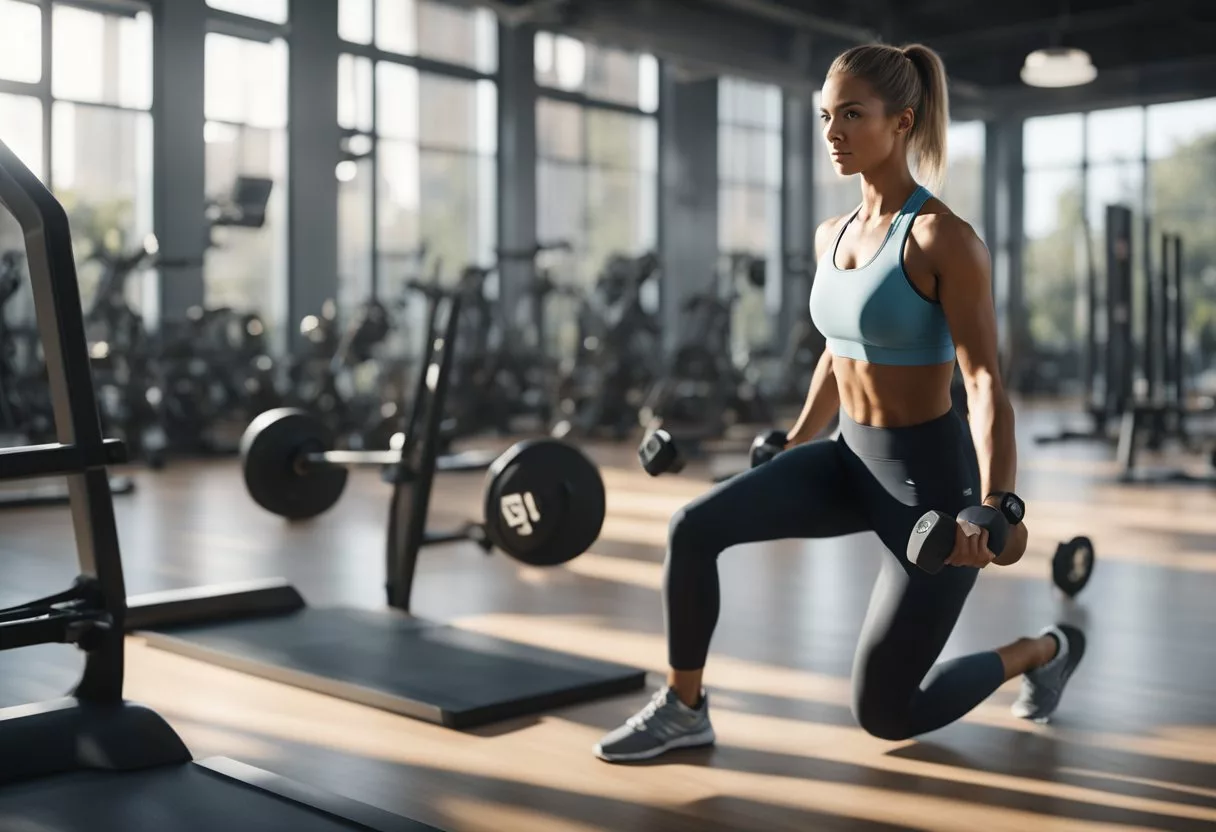
To build strong and powerful legs, it’s essential to incorporate a variety of exercises into your workout routine. This section will cover some of the most effective leg exercises that target different muscle groups in the legs.
Squats
Squats are considered one of the best leg exercises as they target the quadriceps, hamstrings, and glutes.
There are various squat variations, including front squats, back squats, goblet squats, and more.
To perform a squat, stand with your feet shoulder-width apart, with your toes pointing slightly outward.
Lower your body by bending your knees and hips, keeping your back straight, and your chest up.
Descend until your thighs are parallel to the ground, then push through your heels to return to the starting position.
Deadlifts
Deadlifts are another essential leg exercise that targets the hamstrings, glutes, and lower back.
The Romanian deadlift is a popular variation that focuses more on the hamstrings.
To perform a Romanian deadlift, stand with your feet shoulder-width apart, holding a barbell in front of your thighs.
Hinge forward at the hips, keeping your back straight, and lower the barbell towards the ground.
Pause when you feel a stretch in your hamstrings, then return to the starting position by squeezing your glutes and hamstrings.
Lunges
Lunges are a unilateral exercise that targets each leg individually, making them an effective exercise for building muscle imbalances.
There are various lunge variations, including reverse lunges, lateral lunges, and Bulgarian split squats.
To perform a lunge, step forward with one foot and lower your body until your back knee is just above the ground.
Push through your front heel to return to the starting position.
Leg Press and Extensions
The leg press and leg extension machines are popular exercises that target the quadriceps.
To perform a leg press, sit on the machine with your feet on the platform and push the weight away from your body using your legs.
To perform a leg extension, sit on the machine with your knees bent and lift the weight by extending your legs.
Isolation vs Compound Movements
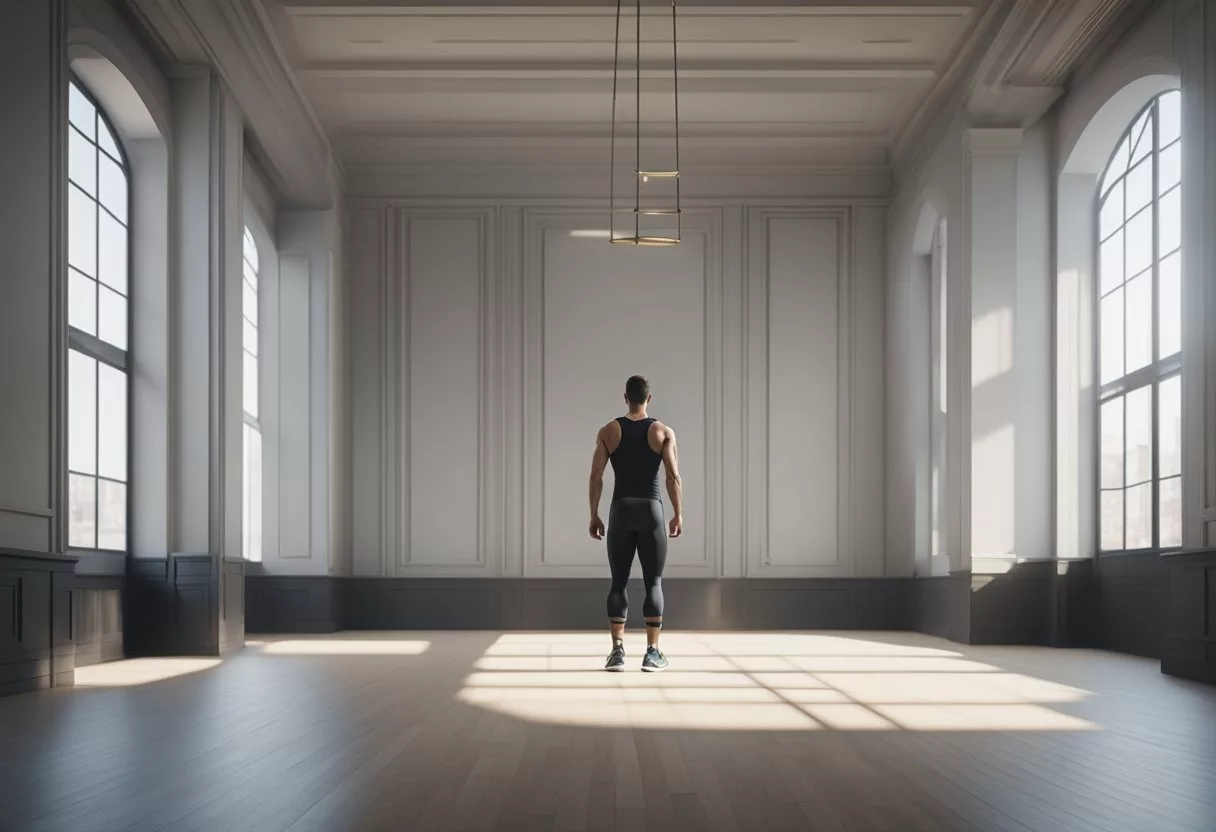
When it comes to leg exercises, there are two types of movements: isolation and compound. Isolation exercises focus on a single muscle group and involve one joint, while compound exercises involve multiple muscle groups and joints.
Benefits of Compound Exercises
Compound exercises, also known as multi-joint movements, are more effective for building overall muscle mass and strength.
They engage multiple muscle groups, including the quadriceps, hamstrings, glutes, and calves, making them more efficient and time-saving.
Compound exercises such as squats, lunges, and deadlifts are great for building lower body strength and improving overall athletic performance.
Another benefit of compound exercises is that they burn more calories than isolation exercises.
Since compound exercises engage more muscle groups, they require more energy and burn more calories. This makes them a great choice for anyone looking to lose weight or improve their body composition.
When to Use Isolation Exercises
While compound exercises are more effective for building overall muscle mass and strength, isolation exercises can be useful for targeting specific muscle groups.
For example, if someone wants to specifically target their quadriceps, they can do exercises such as leg extensions or hack squats.
Isolation exercises can also be useful for people who are recovering from an injury or have imbalances in their muscles.
They allow for more targeted training and can help to correct muscle imbalances.
Bodyweight Leg Workouts
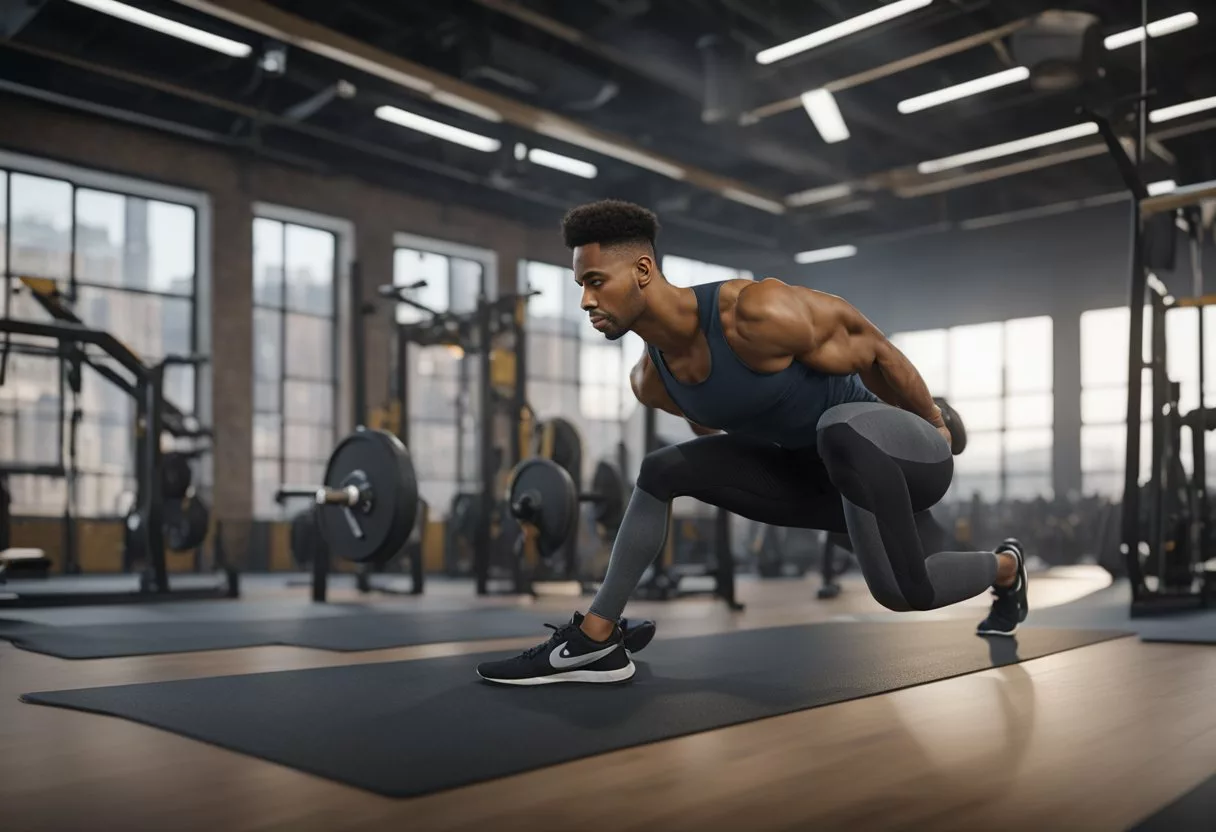
Bodyweight leg workouts are an excellent way to build strength and endurance in your lower body without the need for any equipment. In this section, we will discuss some of the best bodyweight leg exercises that you can add to your workout routine.
Squat Variants
Squats are an excellent exercise for building strength in your legs, and there are many different variations that you can try.
Bodyweight squats are a great place to start, as they are easy to perform and require no equipment.
To perform a bodyweight squat, stand with your feet shoulder-width apart, and lower your body down as if you are sitting in a chair. Keep your weight on your heels and your knees behind your toes.
Another great squat variant is the single-leg squat, also known as the pistol squat.
This exercise is more challenging than the bodyweight squat and requires more balance and stability.
To perform a single-leg squat, stand on one leg with your other leg extended in front of you. Lower your body down as if you are sitting in a chair and then push back up to the starting position.
Lunge Variants
Lunges are another great exercise for building strength in your legs. There are many different variations that you can try.
Walking lunges are a great place to start. They are easy to perform and require no equipment.
To perform a walking lunge, step forward with one leg and lower your body down until your back knee is almost touching the ground. Then, push back up to the starting position and repeat with the other leg.
Another great lunge variant is the reverse lunge. This exercise is similar to the walking lunge, but instead of stepping forward, you step backward. This exercise is great for targeting your glutes and hamstrings.
Glute and Hamstring Focus
If you want to focus on building your glutes and hamstrings, there are several great bodyweight exercises that you can try. One of the best is the glute bridge.
To perform a glute bridge, lie on your back with your knees bent and your feet flat on the ground. Then, lift your hips up towards the ceiling, squeezing your glutes at the top of the movement.
Another great exercise for targeting your glutes and hamstrings is the hip thrust. This exercise is similar to the glute bridge, but instead of lifting your hips up, you thrust them forward.
To perform a hip thrust, sit on the ground with your knees bent and your feet flat on the ground. Place your hands on the ground behind you and lift your hips up towards the ceiling, squeezing your glutes at the top of the movement.
Finally, the single-leg deadlift is an excellent exercise for building strength and stability in your glutes and hamstrings.
To perform a single-leg deadlift, stand on one leg with your other leg extended behind you. Then, lower your body down, keeping your back straight, and push back up to the starting position.
Weighted Leg Training
Weighted leg training is an effective way to build strength and muscle in the lower body. There are several options for weighted leg exercises, including using dumbbells, barbells, or machines and cables.
Using Dumbbells
Dumbbells are a versatile tool for adding weight to leg exercises. One popular exercise is the dumbbell squat, which can be performed with a variety of foot positions to target different areas of the legs.
Another option is the dumbbell lunge, which can be done walking or stationary. Dumbbell step-ups are also a great exercise for building strength and stability in the legs.
Barbell Workouts
Barbells are a classic tool for lifting weights, and there are several exercises that can be done to target the legs.
The barbell back squat is a popular exercise that targets the quads, hamstrings, and glutes.
The barbell hip thrust is another exercise that targets the glutes and hamstrings.
The hack squat is a machine that simulates the motion of a squat with a barbell, making it a great option for those who prefer machines over free weights. The stiff-legged deadlift is another exercise that can be done with a barbell to target the hamstrings.
Machines and Cables
Machines and cables are another option for weighted leg training. Leg curls are a popular machine exercise that targets the hamstrings.
Leg extensions target the quads, while the calf raise machine targets the calves.
Cable exercises, such as cable kickbacks and cable squats, can also be effective for building leg strength and muscle.
Leg Workout Structure
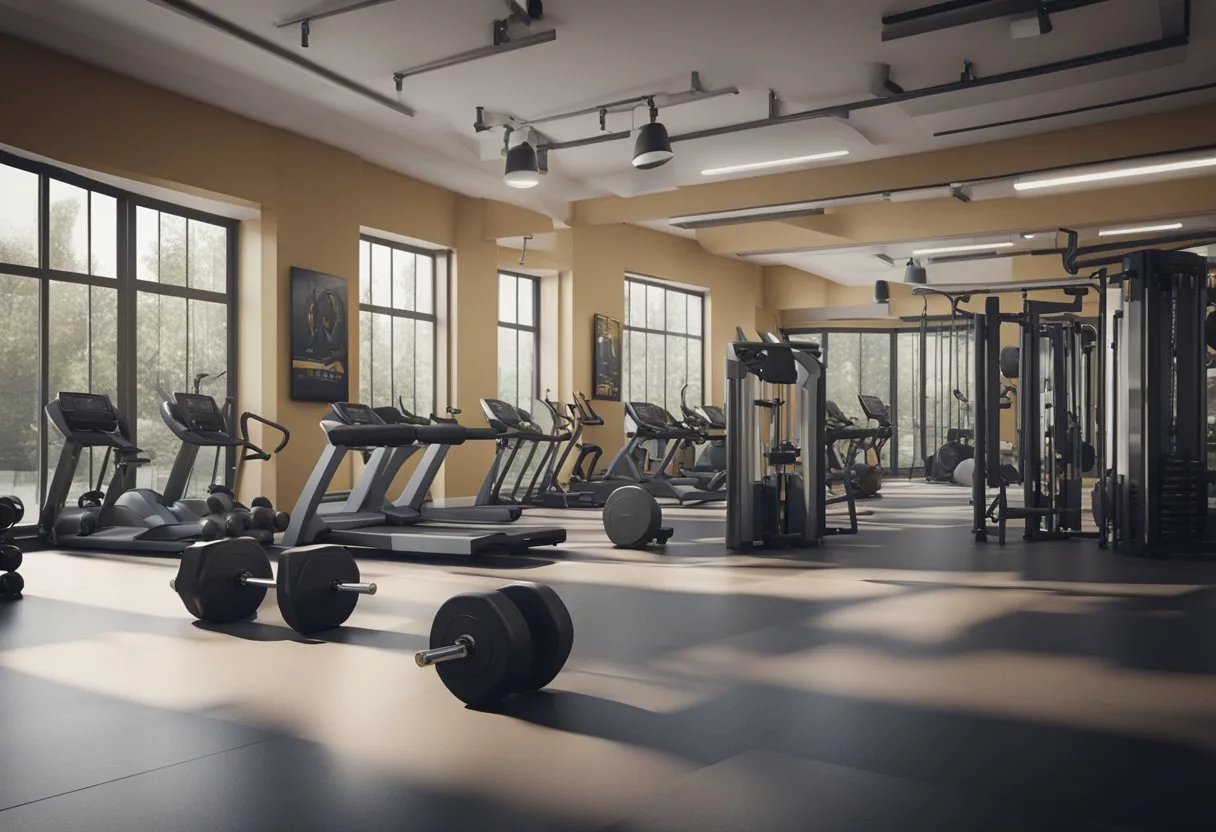
When it comes to leg workouts, a proper structure is essential to achieve desired fitness goals while avoiding injuries. An effective leg workout should include a warm-up, exercise sequencing, and rest and recovery periods.
Warm-Up and Cool-Down
Before starting any leg day workout, perform a proper warm-up routine to increase heart rate and blood flow.
A warm-up should include dynamic stretching exercises, such as leg swings, lunges, and squats, to prepare the muscles for the workout.
Similarly, a cool-down routine is essential to lower the heart rate and prevent muscle soreness.
A cool-down routine should include static stretching exercises, such as hamstring and calf stretches, to improve flexibility and reduce muscle tension.
Exercise Sequencing
An effective leg workout should include a variety of exercises that target different muscle groups in the legs, such as quads, hamstrings, glutes, and calves.
Exercise sequencing is essential to avoid muscle fatigue and ensure proper muscle activation.
It is recommended to start with compound exercises, such as squats and lunges, to target multiple muscle groups simultaneously.
After that, isolation exercises, such as leg curls and leg extensions, can be performed to target specific muscle groups.
Rest and Recovery
Rest and recovery periods are essential to allow the muscles to repair and grow after a workout.
It is recommended to take at least 48 hours of rest between leg workouts to avoid muscle fatigue and injury.
During the rest period, perform stretching exercises to improve flexibility and reduce muscle soreness.
Safety and Proper Form
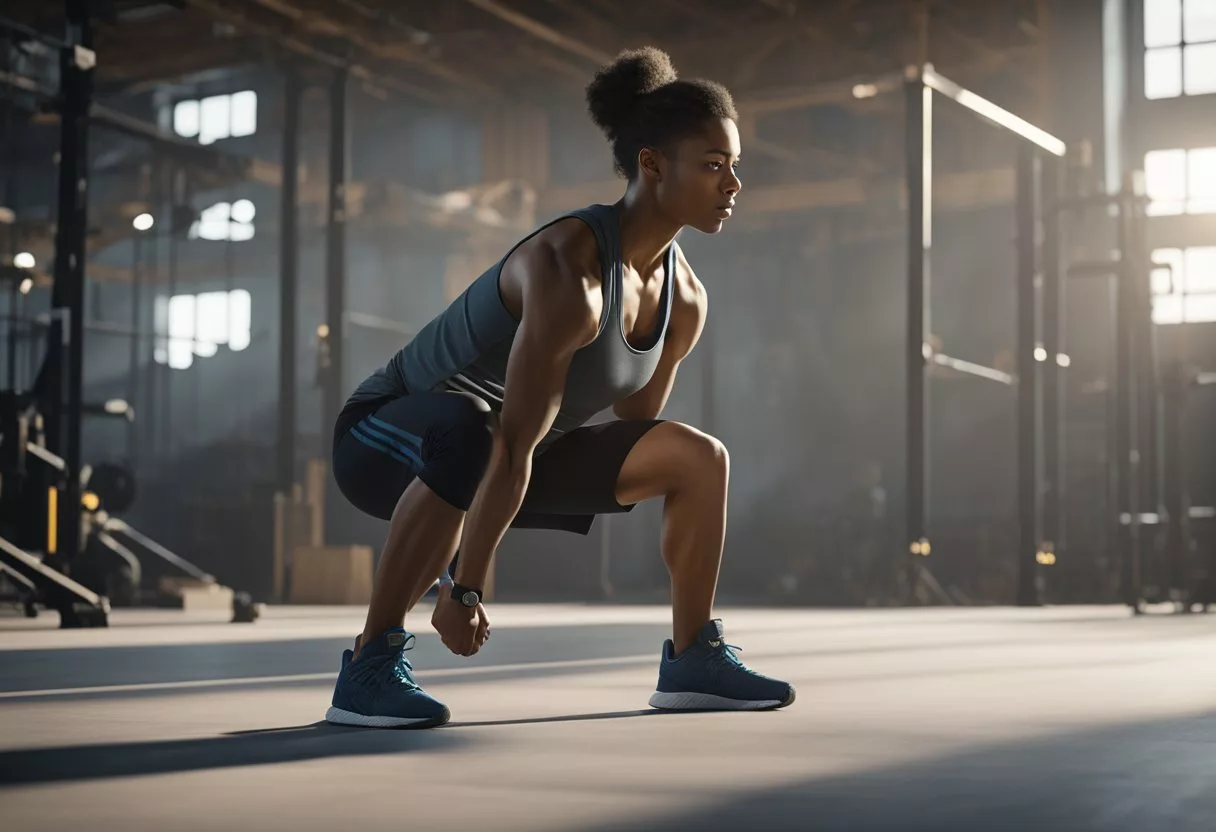
Technique Fundamentals
When performing leg exercises, proper technique is crucial to prevent injury and ensure maximum effectiveness.
Before beginning any leg exercise, make sure to warm up properly and stretch out the muscles in the legs, hips, and lower back. This can help prevent muscle strains and other injuries.
During the exercise, maintaining proper form is essential. This includes keeping the back straight and the core engaged, as well as keeping the knees and ankles in alignment.
It is also important to avoid locking out the knees, which can lead to joint strain.
For exercises such as the squat and leg press, make sure to keep the weight evenly distributed across the feet and to avoid leaning too far forward or backward. This can help prevent strain on the back and hips.
Avoiding Common Mistakes
While proper technique is important, it is also essential to avoid common mistakes that can lead to injury or reduce the effectiveness of the exercise.
One common mistake is using too much weight, which can lead to strain on the knees, back, and hips. Make sure to start with a weight that is manageable and gradually increase it over time.
Another mistake is using momentum to complete the exercise, rather than relying on the muscles themselves.
This can reduce the effectiveness of the exercise and increase the risk of injury, so make sure to move slowly and deliberately, focusing on using the muscles to lift the weight.
Finally, make sure to avoid overtraining, which can lead to muscle strain and other injuries.
Give the muscles time to rest and recover between workouts, and avoid pushing too hard too quickly.
Advanced Leg Training Techniques
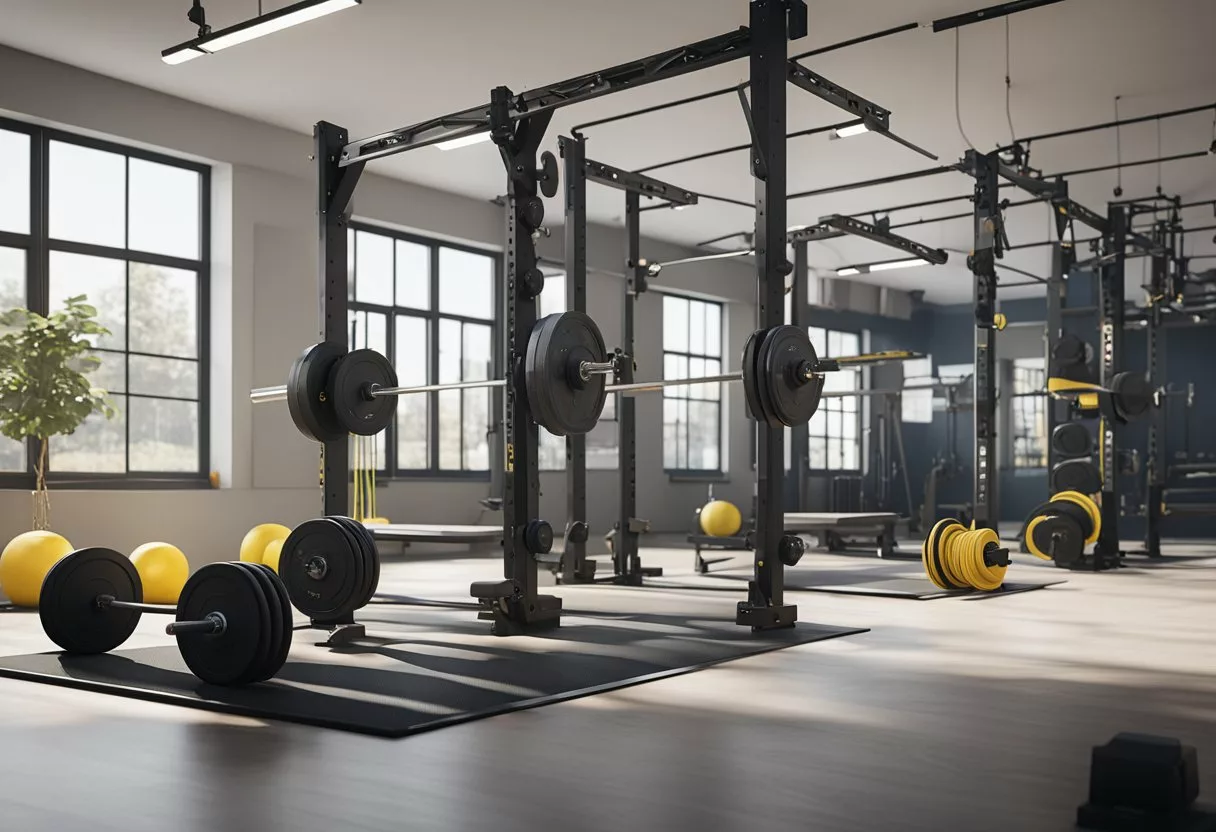
When it comes to building muscle strength and speed, advanced leg training techniques can help take your lower body workouts to the next level. In this section, we’ll explore three techniques that can help you achieve your fitness goals: progressive overload, unilateral exercises, and plyometrics and explosive movements.
Progressive Overload
Progressive overload is a technique that involves gradually increasing the weight, reps, or sets of an exercise over time to challenge your muscles and promote growth.
This technique can be applied to a variety of leg exercises, such as squats, lunges, and leg presses.
To apply progressive overload to your leg workouts, start by selecting a weight that is challenging but manageable for your current fitness level.
Over time, gradually increase the weight by 5-10% each week or every other week. This will help ensure that your muscles are continually being challenged and stimulated to grow.
Unilateral Exercises
Unilateral exercises are exercises that work one leg at a time, rather than both legs simultaneously. These exercises can help correct muscle imbalances and improve overall strength and stability.
Some examples of unilateral exercises include single-leg squats, lunges, and step-ups.
To incorporate these exercises into your leg workouts, try performing them at the beginning or end of your workout, or as a superset with a bilateral exercise.
Plyometrics and Explosive Movements
Plyometrics and explosive movements are high-intensity exercises that involve jumping, hopping, and bounding. These exercises can help improve power and speed, as well as overall leg strength.
Some examples of plyometric exercises include box jumps, jump squats, and single-leg hops.
To incorporate these exercises into your leg workouts, try performing them at the beginning of your workout, after a proper warm-up, or as a finisher to your workout.
Leg Exercises for Specific Goals
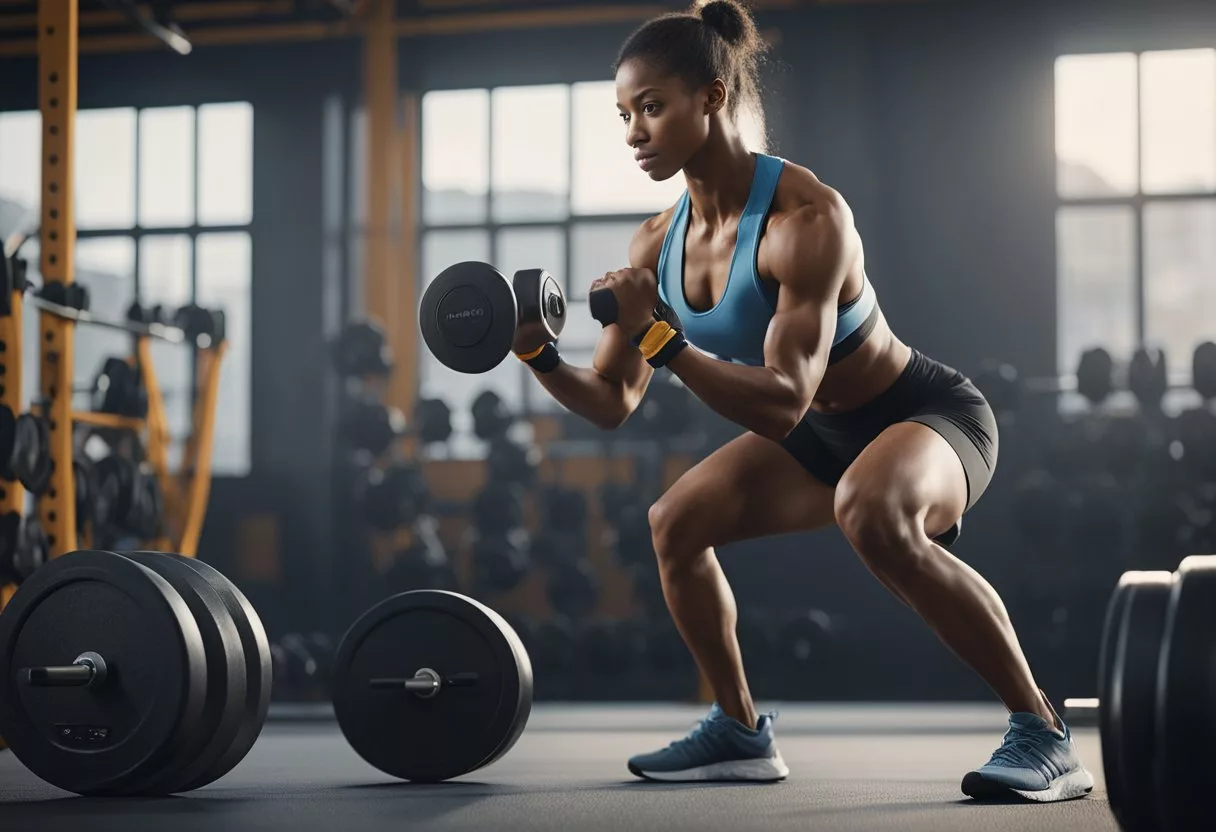
When it comes to leg exercises, there are a variety of goals that people may have in mind. Whether it’s improving athletic performance, building muscle tone, or increasing endurance and stamina, there are specific exercises that can help achieve these goals.
Athletic Performance
For those looking to improve their athletic performance, exercises that focus on explosive power and quick movements are key. Some of the most effective exercises for this goal include:
- Squats: Barbell back squats are one of the best exercises for increasing lower body strength and power. They work the quads, glutes, and hamstrings and can help improve vertical jump height and sprinting speed.
- Lunges: Lunges are a great exercise for improving balance, stability, and coordination. They work the quads, hamstrings, and glutes and can help improve agility and quickness.
- Plyometrics: Plyometric exercises, such as box jumps and jump squats, are designed to improve explosive power and speed. They work by rapidly contracting and stretching the muscles, which can help improve overall athletic performance.
Bodybuilding and Muscle Tone
For those looking to build muscle tone and size, exercises that focus on heavy weights and high volume are key.
Some of the most effective exercises for this goal include:
- Leg Press: The leg press is a great exercise for building overall leg strength and size. It works the quads, hamstrings, and glutes. You can do it with heavy weights and high volume to promote muscle growth.
- Romanian Deadlifts: Romanian deadlifts are a great exercise for targeting the hamstrings and glutes. You can do them with heavy weights and high volume to promote muscle growth and improve overall leg strength.
- Calf Raises: Calf raises are a great exercise for targeting the calf muscles. You can do them with heavy weights and high volume to promote muscle growth and improve overall leg size and definition.
Endurance and Stamina
For those looking to improve their endurance and stamina, exercises that focus on high reps and low weight are key.
Some of the most effective exercises for this goal include:
- Walking Lunges: Walking lunges are a great exercise for improving endurance and stamina. You can do them with bodyweight or light weights for high reps to promote muscular endurance.
- Step-Ups: Step-ups are a great exercise for improving endurance and stamina in the legs. You can do them with bodyweight or light weights for high reps to promote muscular endurance.
- Cycling: Cycling is a great exercise for improving cardiovascular endurance and stamina. It can be done indoors or outdoors and can be adjusted to different levels of intensity to promote endurance and stamina.
Adapting Leg Workouts for Different Environments
When it comes to leg workouts, there are many different environments in which you can exercise. Whether you prefer to workout at home, in the gym, or outdoors, there are plenty of exercises that you can do to strengthen your legs.
In this section, we will explore some of the best leg exercises for different environments.
Home Workouts
If you prefer to workout at home, there are many exercises that you can do to strengthen your legs.
One of the best exercises for the legs is the walking lunge. This exercise is great for building strength in the quads, hamstrings, and glutes.
To perform a walking lunge, simply step forward with one foot and lower your body until your back knee is just above the ground. Then, step forward with your other foot and repeat.
Another great exercise for the legs that you can do at home is the kettlebell swing.
This exercise is great for building strength and power in the legs, as well as improving your cardiovascular fitness.
To perform a kettlebell swing, stand with your feet shoulder-width apart and hold the kettlebell with both hands. Swing the kettlebell back between your legs, then thrust your hips forward and swing the kettlebell up to shoulder height.
Gym Routines
If you prefer to workout in the gym, there are many exercises that you can do to strengthen your legs.
One of the most popular leg exercises in the gym is the squat. Squats are great for building strength in the quads, hamstrings, and glutes.
To perform a squat, stand with your feet shoulder-width apart and lower your body until your thighs are parallel to the ground. Then, push through your heels and stand back up.
Another great exercise for the legs that you can do in the gym is the leg press.
The leg press machine is great for building strength in the quads, hamstrings, and glutes.
To perform a leg press, sit in the machine with your feet on the platform and your knees bent. Then, push the platform away from your body until your legs are straight.
Outdoor Exercises
If you prefer to workout outdoors, there are many exercises that you can do to strengthen your legs.
One of the best exercises for the legs that you can do outdoors is running. Running is great for building strength and endurance in the legs, as well as improving your cardiovascular fitness.
To get the most out of your running workout, try running on different surfaces, such as grass, gravel, and pavement.
Another great exercise for the legs that you can do outdoors is hill sprints.
Hill sprints are great for building strength and power in the legs, as well as improving your cardiovascular fitness.
To perform a hill sprint, find a hill with a steep incline and sprint up it as fast as you can. Then, walk back down and repeat.
Leg Training Across the Lifespan
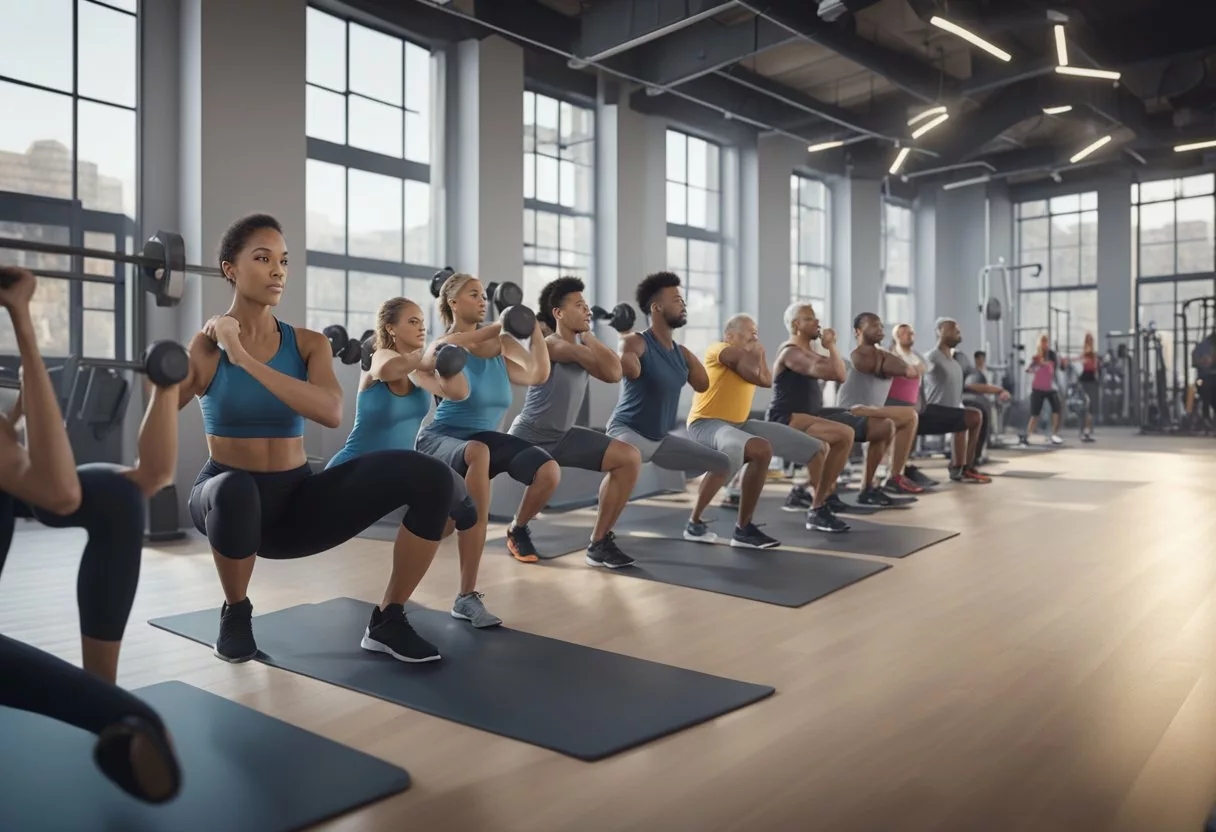
When it comes to leg training, it is important to consider the different stages of life. Leg exercises can benefit people of all ages, but the approach to training may vary depending on age and long-term health goals.
Youth and Adolescents
Youth and adolescents can benefit greatly from leg exercises. In addition to building strength and endurance, leg exercises can also improve joint health and prevent injury.
It is important to start with bodyweight exercises and gradually progress to weighted exercises as strength and coordination improves.
Examples of leg exercises for youth and adolescents include:
- Bodyweight squats
- Lunges
- Step-ups
- Jumping exercises (such as jump squats and box jumps)
It is important to emphasize proper form and technique to prevent injury and ensure long-term joint health.
Adults and Middle-Aged
For adults and middle-aged individuals, leg exercises can help maintain muscle mass and prevent age-related muscle loss. In addition, leg exercises can improve balance and reduce the risk of falls, which can be a concern as people age.
Examples of leg exercises for adults and middle-aged individuals include:
- Squats (with or without weights)
- Lunges (with or without weights)
- Deadlifts
- Leg press
- Calf raises
It is important to start with lighter weights and gradually increase weight and intensity as strength improves. Proper form and technique are also important to prevent injury.
Seniors and Aging
For seniors and aging individuals, leg exercises can help maintain mobility and independence. Leg exercises can improve balance, coordination, and joint health, which can reduce the risk of falls and injury.
Examples of leg exercises for seniors and aging individuals include:
- Bodyweight squats
- Step-ups
- Seated leg press
- Seated calf raises
- Resistance band exercises
It is important to start with light resistance and gradually increase intensity as strength improves.
It is also important to work with a qualified trainer or physical therapist to ensure proper form and technique and to prevent injury.
Nutrition and Leg Muscle Development

Macronutrients and Muscle Growth
To build muscle, the body requires an adequate amount of macronutrients, including protein, carbohydrates, and fats.
Protein is particularly important for muscle growth, as it provides the building blocks necessary for muscle repair and growth.
Good sources of protein include lean meats, poultry, fish, eggs, and plant-based sources such as beans, lentils, and tofu.
Carbohydrates are also important for muscle growth, as they provide the body with energy during exercise.
Good sources of carbohydrates include whole grains, fruits, and vegetables.
Fats are also important for muscle growth, as they help the body absorb vitamins and minerals necessary for muscle repair and growth.
Good sources of healthy fats include nuts, seeds, avocado, and olive oil.
Hydration and Electrolytes
Proper hydration is essential for muscle growth and overall health.
When the body is dehydrated, it can lead to muscle cramps, fatigue, and decreased performance.
It is recommended that individuals drink at least 8-10 cups of water per day, and more if they are engaging in intense exercise.
Electrolytes, such as sodium, potassium, and magnesium, are also important for muscle function and hydration.
Electrolytes help regulate fluid balance in the body and are lost through sweat during exercise.
Good sources of electrolytes include fruits and vegetables, coconut water, and sports drinks.
Supplements
While a balanced diet is the best way to obtain the nutrients necessary for muscle growth, supplements can also be beneficial for individuals who are not able to meet their nutrient needs through food alone.
Some popular supplements for muscle growth include protein powders, creatine, and branched-chain amino acids (BCAAs).
It is important to note that supplements should not be used as a replacement for a healthy diet and should be used under the guidance of a healthcare professional.
Frequently Asked Questions
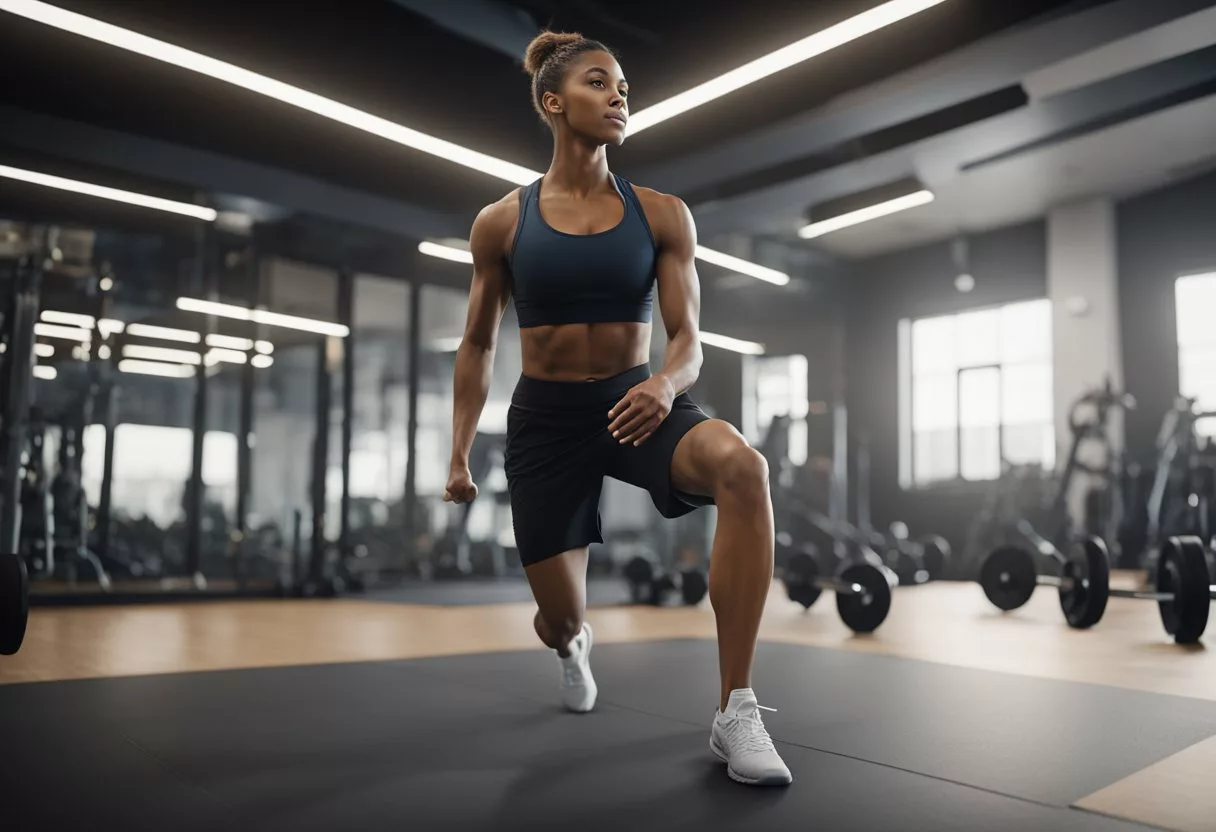
What are the most effective leg exercises to do at the gym?
Some of the most effective leg exercises to do at the gym include squats, lunges, leg presses, and deadlifts. These exercises target multiple muscle groups in the legs and can help build strength and muscle mass.
How can I effectively work out my legs at home with no equipment?
There are several effective leg exercises that can be done at home with no equipment, such as bodyweight squats, lunges, and calf raises.
These exercises can be modified to increase difficulty and resistance by adding variations such as jump squats or single-leg squats.
Which leg workout machines offer the best results for toning?
Leg workout machines such as the leg press, leg extension, and calf raise machine can offer great results for toning the legs. However, it is important to use these machines correctly and with proper form to avoid injury and maximize results.
What are the best leg exercises for women seeking to strengthen their lower body?
The best leg exercises for women seeking to strengthen their lower body include squats, lunges, deadlifts, and hip thrusts. These exercises target the glutes, quads, and hamstrings, helping to tone and strengthen the lower body.
How can I incorporate dumbbells into my leg workout routine?
Dumbbells can be incorporated into a leg workout routine by adding weighted lunges, squats, and deadlifts.
These exercises can be done with dumbbells held in each hand, increasing resistance and difficulty.
What is the ideal number of leg exercises to include in a single workout session?
The ideal number of leg exercises to include in a single workout session can vary. It can depend on individual fitness goals and experience level. However, a good rule of thumb is to include 3-5 exercises. Focus on targeting different muscle groups in the legs.
Make sure to allow for proper rest and recovery between sets and exercises. This helps to avoid injury and maximize results.